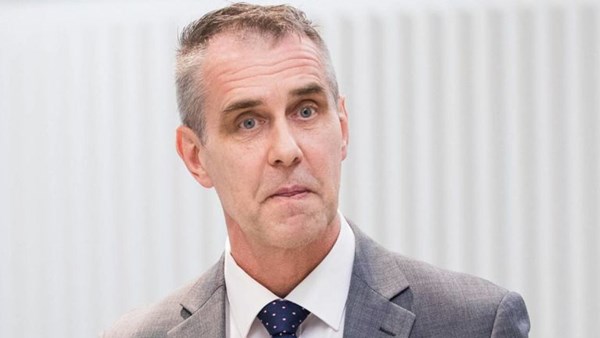Ex-chief of Estonian bank involved in massive Russian money laundering scandal found dead
The scandal surrounding the Estonian arm of Danske Bank caught laundering dirty money from Russia has now resulted in a death.
Aivar Rehe, former head of Danske Bank’s Estonian arm, had been missing since the start of the week and has now been found dead, TASS reports.
The banker’s body was found by police on Wednesday morning in his own garden, said Valdo Poder, chief of the Estonian police’s North Prefecture.
“There are no signs of a violent death on the body, and nothing indicates an accident either,” Poder noted.
“In order to shield Aivar Rehe’s loved ones from negative emotions, the police department and border guards will refrain from mentioning details related to the discovery of Rehe’s body. The police will also not be initiating an investigation into the incident,” he added.
According to the Estonian news outlet ERR, the banker is believed to have committed suicide.
Rehe had been questioned in a fraud probe initiated in July last year, three months after an internal investigation was carried out in Danske’s central office in Copenhagen. The probe showed that more than half of the $230 billion that passed through the Estonian branch between 2005 and 2013 had suspicious origins.
An investigation of the bank, initiated by the US Securities and Exchange Commission and Ministry of Justice, as well as the governments of Denmark, the UK and France, resulted in then Danske Bank CEO Thomas Borgen being forced to resign.
Estonia and Denmark’s own financial regulators were also investigated by the European Banking Authority, which called the incident one of the largest money laundering scandals in its entire history.
In February 2019, Danske Bank announced that it would be shutting all of its branches in Estonia, other Baltic states and in Russia. The Estonian financial regulator spent eight months returning clients’ funds and selling or transferring loans to other banks.
The internal investigation of Danske Bank showed that the money laundering scheme involving 15,000 non-residents had primarily served the Russian market.
The scheme originated in two Estonian banks established in 1992 specifically to service retail and corporate clients from Russia, converting funds from rubles to other currencies and sending profits to third countries.
In recent years, the Estonian arm of Danske Bank received 90% of its pre-tax profit from such clients, almost all of it as payment for foreign currency transactions.
According to the report, roughly 177 of the bank’s clients were Russians who had been identified as members of the “Russian laundromat” which sent funds from Russia through a Moldovan intermediary to companies registered in the UK or in tax havens such as the Belize or British Virgin Islands.
The International Monetary Fund estimates that $2 trillion dollars are laundered every year, roughly 2.5% of the global GDP.
